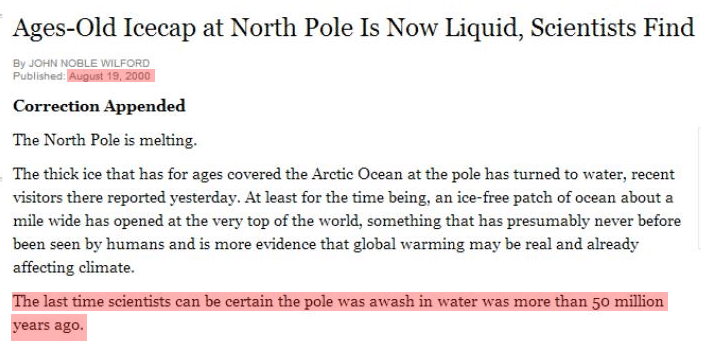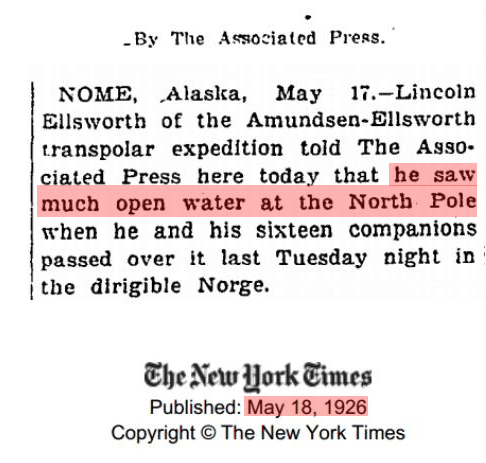The New York Times said in 2000 that the North Pole was ice-free for the first time in 50 million years
Ages-Old Icecap at North Pole Is Now Liquid, Scientists Find – New York Times
They also reported that it was ice-free in 1926, which must have been 50 million years ago.
h/t to Jimbo




New “Times” old lies!
Yup, 50 million years ago, or it seems that way.
In 1959 the nuclear submarine the “Skate” and its companion submarine surfaced at the north pole and took pictures of the open water.
An ice-free north pole is nothing out of the ordinary. But Wadhams, the Arctic specialist, had said something entirely shocking.
The only problem is that if it has not happened before then did the North Pole have ice when the central Arctic Ocean was ice-free?
These are question we need answers to. Wadhams also says that the Arctic will be ice free in 2016 at the very latest. Just 2 years to go! 🙂 This idiot has created a trap of his own making.
Here is the NOAA contradicting Wadhams.
NYT also thinks a depression is a recovery.